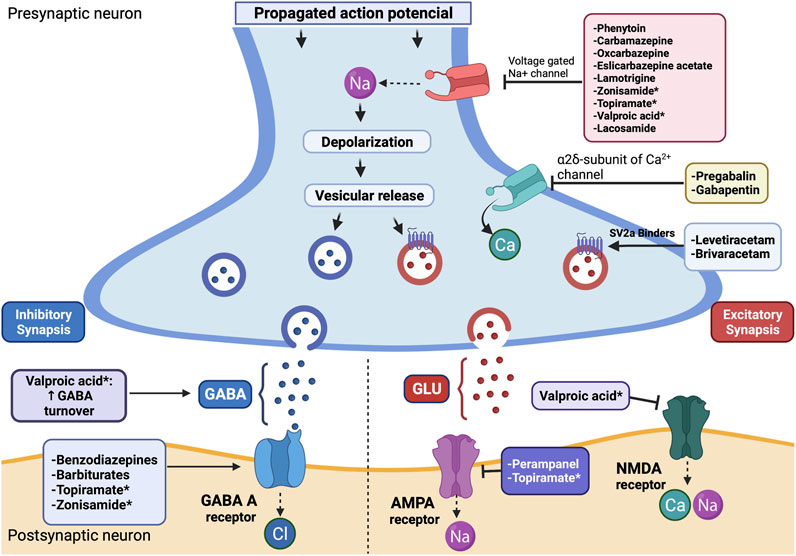Topiramate powder is a widely used anticonvulsant medication that has proven effective in preventing seizures in patients with epilepsy. This powerful drug works through multiple mechanisms in the brain to reduce the frequency and severity of seizures. Understanding how Topiramate powder functions is crucial for both healthcare professionals and patients to maximize its benefits and ensure proper usage. In this comprehensive blog post, we'll explore the intricate workings of Topiramate powder and its role in seizure prevention.
What are the main mechanisms of action for Topiramate in seizure prevention?
Topiramate powder employs several mechanisms of action to prevent seizures, making it a versatile and effective anticonvulsant medication. These mechanisms work in concert to stabilize neural activity and reduce the likelihood of seizure occurrence. Let's delve into the primary ways Topiramate functions in the brain:

- Sodium channel blockade: One of the key mechanisms of Topiramate is its ability to block voltage-dependent sodium channels. By doing so, it reduces the excitability of neurons, making them less likely to fire rapidly and excessively. This action helps prevent the spread of abnormal electrical activity that can lead to seizures.
- GABA enhancement: Topiramate enhances the activity of gamma-aminobutyric acid (GABA), the primary inhibitory neurotransmitter in the central nervous system. By increasing GABA-mediated inhibition, Topiramate helps to dampen excessive neuronal firing and maintain a balance between excitatory and inhibitory signals in the brain.
- Glutamate receptor antagonism: The drug also acts as an antagonist at certain glutamate receptors, particularly the AMPA and kainate receptors. Glutamate is the primary excitatory neurotransmitter in the brain, and by reducing its effects, Topiramate helps to decrease overall neuronal excitability.
- Carbonic anhydrase inhibition: Topiramate inhibits certain isoenzymes of carbonic anhydrase, which may contribute to its anticonvulsant effects by altering the pH and electrical activity of neurons.
- Calcium channel modulation: The drug may also modulate high-voltage-activated calcium channels, further contributing to its ability to stabilize neuronal activity.
These diverse mechanisms of action allow Topiramate to address multiple aspects of seizure generation and propagation, making it an effective treatment option for various types of epilepsy. The combination of these effects helps to raise the seizure threshold and reduce the likelihood of seizure occurrence in patients with epilepsy.
How long does it take for Topiramate to become effective in preventing seizures?
The time it takes for Topiramate Powder to become effective in preventing seizures can vary from person to person. Several factors influence the onset of action and the time required to achieve optimal seizure control. Understanding these factors is crucial for patients and healthcare providers to manage expectations and ensure proper treatment adherence.
Gradual titration: Topiramate is typically initiated at a low dose and gradually increased over time to minimize side effects and allow the body to adjust to the medication. This process, known as titration, can take several weeks to months. During this period, the effectiveness of the drug in preventing seizures may gradually increase as the dose is adjusted to the optimal level for each individual patient.
Individual response: The response to Topiramate can vary significantly among patients. Some individuals may experience a reduction in seizure frequency or severity within the first few weeks of treatment, while others may require several months before noticing significant improvements. Factors such as the type and severity of epilepsy, underlying causes, and individual physiology can all influence the time to effectiveness.
Steady-state concentration: It takes approximately 4-8 days for Topiramate to reach steady-state plasma concentrations in the body when taken at a constant dosage. However, this does not necessarily correlate directly with seizure control, as the drug's effects on the brain may take longer to fully manifest.
Combination therapy: In many cases, Topiramate is used as part of a combination therapy with other antiepileptic drugs. The interaction between multiple medications can affect the time to achieve optimal seizure control. It may take time for healthcare providers to find the right combination and dosages of medications for each patient.
Monitoring and adjustments: Regular monitoring of seizure frequency, severity, and side effects is essential during the initial months of treatment. Healthcare providers may need to make dose adjustments or modify the treatment plan based on the patient's response, which can influence the time to achieve effective seizure prevention.
While some patients may experience improvements in seizure control within the first few weeks of treatment, it is generally recommended to allow at least 2-3 months of consistent treatment before fully assessing the effectiveness of Topiramate in preventing seizures. During this time, patients should maintain open communication with their healthcare providers, reporting any changes in seizure patterns or side effects to allow for timely adjustments to the treatment plan.
Can Topiramate be used in combination with other anti-epileptic drugs for better seizure control?

Topiramate Powder is frequently used in combination with other anti-epileptic drugs (AEDs) to enhance seizure control in patients with refractory epilepsy. This approach, known as polytherapy or combination therapy, can offer several benefits and improve outcomes for patients who have not achieved adequate seizure control with monotherapy. Let's explore the use of Topiramate in combination with other AEDs and its potential advantages:
Synergistic effects: Combining Topiramate with other AEDs that have different mechanisms of action can lead to synergistic effects, potentially improving seizure control beyond what can be achieved with either drug alone. For example, pairing Topiramate with a sodium channel blocker like carbamazepine or a GABA enhancer like valproic acid may target multiple aspects of seizure generation and propagation.
Broader spectrum of efficacy: Some patients may have multiple types of seizures or epilepsy syndromes that respond differently to various medications. Using Topiramate in combination with other AEDs can help address a broader range of seizure types, potentially leading to better overall seizure control.
Dose reduction and side effect management: In some cases, combining Topiramate with another AED may allow for lower doses of each medication while maintaining or improving seizure control. This approach can help minimize dose-dependent side effects associated with individual drugs.
Overcoming pharmacoresistance: For patients who have developed resistance to certain AEDs, adding Topiramate to the treatment regimen may help overcome this resistance and improve seizure control. The unique mechanisms of action of Topiramate may complement other medications and provide additional benefits.
Individualized treatment: Combination therapy with Topiramate allows for more personalized treatment approaches. Healthcare providers can tailor the combination and dosages of medications to each patient's specific needs, taking into account factors such as seizure types, comorbidities, and individual response to treatment.
Common combinations: Some frequently used combinations involving Topiramate include:
- Topiramate + Lamotrigine
- Topiramate + Levetiracetam
- Topiramate + Valproic acid
- Topiramate + Carbamazepine
- Topiramate + Oxcarbazepine
Considerations for combination therapy: When using Topiramate in combination with other AEDs, healthcare providers must carefully consider potential drug interactions, overlapping side effect profiles, and the impact on pharmacokinetics. Some important factors to consider include:
- Drug-drug interactions: Topiramate may interact with other AEDs, affecting their metabolism or efficacy. For example, Topiramate can decrease the plasma concentrations of certain hormonal contraceptives, potentially reducing their effectiveness.
- Additive side effects: Some side effects may be more pronounced when Topiramate is combined with other AEDs. For instance, the risk of cognitive impairment or sedation may increase when used with certain medications.
- Dose adjustments: The addition of Topiramate to an existing AED regimen may require dose adjustments of both Topiramate and the other medications to optimize efficacy and minimize side effects.
- Monitoring: Close monitoring of seizure frequency, adverse effects, and drug levels (when applicable) is essential when initiating combination therapy with Topiramate.
In conclusion, Topiramate Powder can be effectively used in combination with other anti-epileptic drugs to improve seizure control in patients with refractory epilepsy. This approach allows for personalized treatment strategies that target multiple aspects of seizure generation and propagation. However, careful consideration of potential interactions, side effects, and individual patient factors is crucial when implementing combination therapy. Healthcare providers should work closely with patients to find the optimal combination and dosages of medications to achieve the best possible seizure control while minimizing adverse effects.
If you are also interested in this product and want to know more product details, or want to know about other related products, please feel free to contact sasha_slsbio@aliyun.com.
References
- Shank RP, Maryanoff BE. Molecular pharmacodynamics, clinical therapeutics, and pharmacokinetics of topiramate. CNS Neurosci Ther. 2008;14(2):120-142.
- Lyseng-Williamson KA, Yang LP. Topiramate: a review of its use in the treatment of epilepsy. Drugs. 2007;67(15):2231-2256.
- Mula M. Topiramate and cognitive impairment: evidence and clinical implications. Ther Adv Drug Saf. 2012;3(6):279-289.
- Brandt C, Elsner H, Furatsch N, et al. Topiramate overdose: a case report of a patient with extremely high topiramate serum concentrations and nonconvulsive status epilepticus. Epilepsia. 2010;51(6):1090-1093.
- Biton V. Clinical pharmacology and mechanism of action of zonisamide. Clin Neuropharmacol. 2007;30(4):230-240.
- French JA, Kanner AM, Bautista J, et al. Efficacy and tolerability of the new antiepileptic drugs II: treatment of refractory epilepsy: report of the Therapeutics and Technology Assessment Subcommittee and Quality Standards Subcommittee of the American Academy of Neurology and the American Epilepsy Society. Neurology. 2004;62(8):1261-1273.
- Maryanoff BE, Nortey SO, Gardocki JF, Shank RP, Dodgson SP. Anticonvulsant O-alkyl sulfamates. 2,3:4,5-Bis-O-(1-methylethylidene)-beta-D-fructopyranose sulfamate and related compounds. J Med Chem. 1987;30(5):880-887.
- Bootsma HP, Ricker L, Hekster YA, et al. The impact of side effects on long-term retention in three new antiepileptic drugs. Seizure. 2009;18(5):327-331.
- Guerrini R, Parmeggiani L. Topiramate and its clinical applications in epilepsy. Expert Opin Pharmacother. 2006;7(6):811-823.
- Stephen LJ, Brodie MJ. Pharmacotherapy of epilepsy: newly approved and developmental agents. CNS Drugs. 2011;25(2):89-107.

